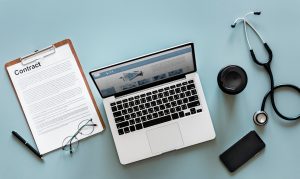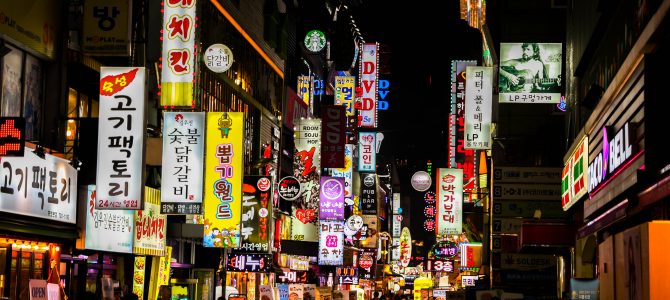SEOUL — South Korea has the maximum rate of plastic surgeries on the planet, using a whopping 20 procedures per 1,000 individuals. The next nearest state, the US, comes in at 13 processes per 1,000 individuals.

Seoul is the capital and largest metropolis of the Republic of Korea (commonly called South Korea). Seoul takes up the majority of the Seoul Capital Area, but it also contains the encompassing Incheon metropolis and Gyeonggi province, which is entirely home to about half of the nation’s inhabitants. In Seoul, the nation’s bustling capital, the speed of plastic surgeries feels much greater. Whenever I walked into foot the main airport serving Seoul, the Incheon International Airport, I was welcomed by a plastic surgery ad that was the length of a city block.
If you are unfamiliar with plastic surgery or cosmetic surgery, allow me to clarify. Cosmetic surgery is a surgical specialization involving the recovery, reconstruction, or modification of your body. It can be broken into two classes. The first is cosmetic operation including craniofacial surgery, hand surgery, microsurgery, and the treatment of burns. Another is decorative or aesthetic surgery. While cosmetic surgery intends to rebuild part of the human body or enhance its operation, aesthetic surgery aims at enhancing the visual appeal of it.
Even the Gangnam District is among the 25 local authority districts that form the city of Seoul. Gangnam literally means “South of the River”. As of 2017, Gangnam District had a census population of 561,052 and is the third largest district in Seoul, with an estimated 39.5 km2 of land mass.
As soon as I came at Gangnam, a luxury district in Seoul across the lake in downtown, I was greeted with more ads from the subway and sign after sign for cosmetic surgery practices. Outside the Gangnam Station, in which my Airbnb is, people with bandaged eyes and faces and nose guards walking around is not an unusual sight.
By some estimates, there are over 500 clinics in Gangnam independently and almost 1 million procedures per year. Korean research company discovered in 2015 that approximately one in three South Korean women, aged between 19 and 29, have had plastic surgery. A BBC poll set that amount at 50 percent or greater.
Regardless of the high numbers for South Koreans, they’re far from the only ones getting plastic surgery in Seoul. Medical tourism is a huge business in South Korea; 22 percent of the 450,000+ healthcare vacationers in 2016 arrived in South Korea for plastic surgery. The government expects several million yearly medical tourists by 2020, according to the New York Times. The huge majority are from China.
During my latest trip to Seoul, I believed it’d be fun/terrifying/funny/dreadful to have an appointment with a plastic surgeon to learn what operation they might suggest I really do. I visited Dr. Choi Min, a professional surgeon at Gangnam, who studied me about ten minutes, took a collection of photos, then gave me his professional opinion.
Many Koreans seeing a plastic surgeon will be well-versed in plastic surgery and know what they need to do, Choi explained. In the great majority of instances, they want to find a blepharoplasty, the plastic surgery operation for fixing defects, deformities, and disfigurations of their eyebrow and for visually changing the eye area of the face, or double-eyelid operation, where they fit a crease from the eyelid to produce the eye to look bigger, so I’m out. I have a double eyelid.
Foreigners, on the other hand, according to Choi, are often searching for more advice from a physician.
Besides an eye lift surgery, generally, to provide me a much more “balanced” facial profile, is what Choi called it, he suggested that I have a rhinoplasty, commonly called a nose job which entails modifying and fixing the shape, restoring the acts, and enhancing the nose by solving nasal injury (blunt, penetrating, burst ), congenital defect, respiratory impediment, or even a neglected primary rhinoplasty, to resolve a small bulge in my nose and straighten that, in addition to performing a chin augmentation operation to provide me a much more prominent chin.
Then he suggested I have a few injectable dermal fillers to eliminate wrinkles in my brow and smooth outside a bulge there. Injectable fillers are a soft tissue filler injected into the skin to help fill the wrinkles in the facial skin, restoring a smoother look. Most of these wrinkle fillers are temporary since they’re eventually absorbed by the body. Some might need more than 1 injection to attain the wrinkle-smoothing effect. The result lasts for approximately six months or more. Besides, dermal filler, cheek fillers is another form of injectable filler.
In addition, he proposed fat grafts to fill in and smooth out the circles beneath my eyes, which now make me seem tired.
Finally, he suggests I take some fat and skin from my throat to slim down it once I receive the chin augmentation. Each operation would cost somewhere between $US3,000 and $US8,000, based on the intricacy and what quality of physician I used.
So, in the end, if anybody has a spare $US20,000-$US30,000 sitting near, what do you believe? Should I do it before I depart?


